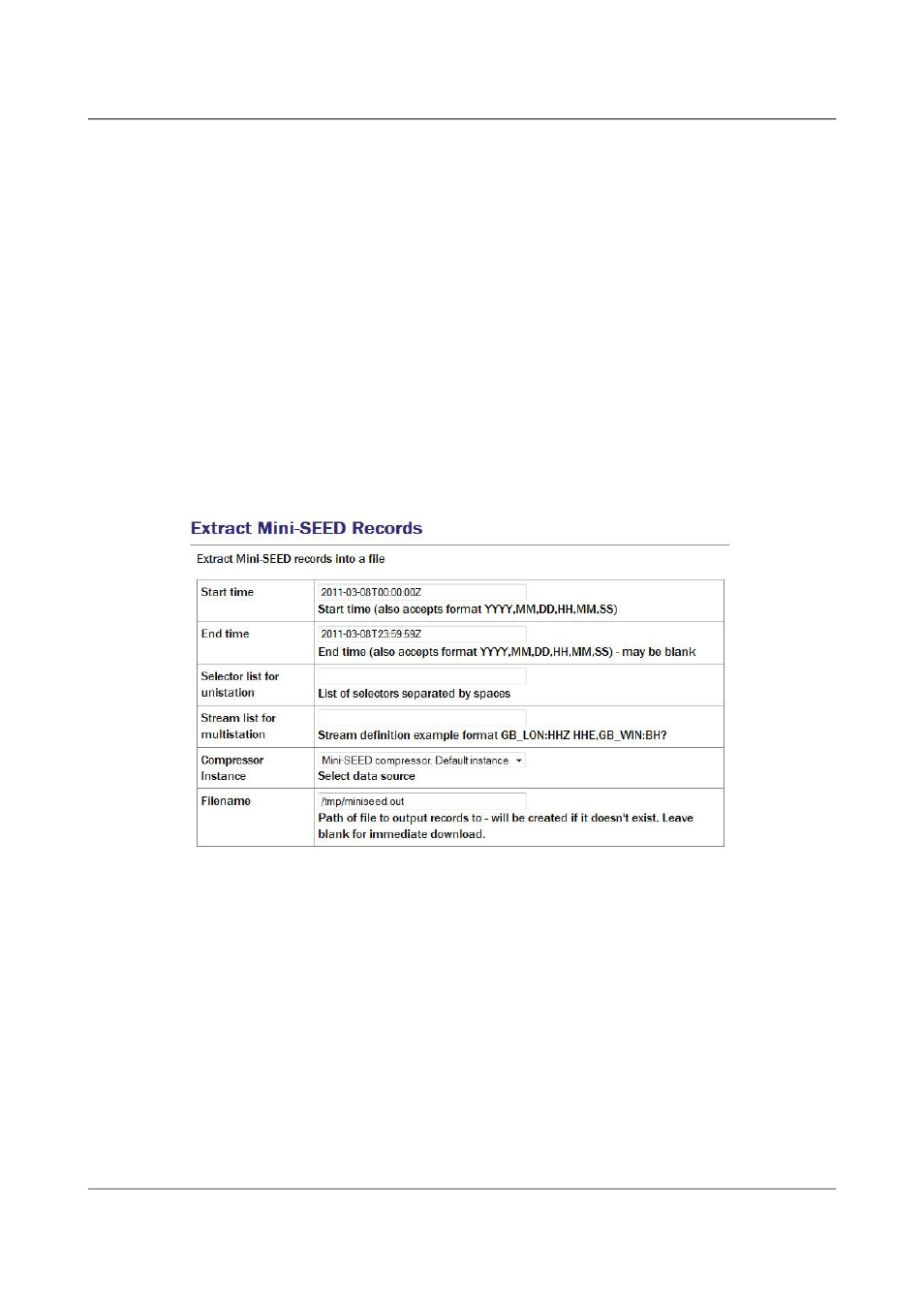Guralp Systems CMG-DCM build <10,000 User Manual
Page 239

Acquisition Modules and Platinum Firmware
Monitoring Operations
64 M but can be changed from the compressor's configuration screen, as
described in section 12.2.1 on page 180. Records are never erased from the
ring-buffer; the oldest records are over-written when the buffer becomes full.
In a steady-state configuration, therefore, a fixed number of records, covering
a fixed time period, are always present in the buffer.
If 512-byte records have been configured (as required for SEEDlink) a tool is
available to extract some or all of these records and either download them
(using the operator's browser) or write them to a file as a MiniSEED volume.
Such files can then be manually copied from the system to removable storage,
using the cp or mv commands, or to another system over the network, using
scp or rsync, for example.
To extract MiniSEED records using the web interface select:
Tools → Extract MiniSEED records
The following screen is displayed:
Start time and End time: Used to prevent the extraction of records whose
timestamps fall outside the specified interval. The End time text-box may be
left blank, in which case data up to the most recent are included in the
extraction. Times may be specified in one of two formats:
YYYY-MM-DDThh:mm:ssZ or YYYY,MM,DD,hh,mm,ss (where
YYYY
represents the four-digit year, MM the two-digit month (January is month 1),
DD is the two-digit day-of month (counting from 1) and hh, mm and ss are the
two-digit hour, minute and second, respectively. The data and time are UTC
and all numbers should be padded with leading zeroes to make up the
required length.
The data can also be filtered to extract one or more specific streams. The
selection mechanism supports both the ubiquitous multistation mode and the
239
Issue E - February 2014